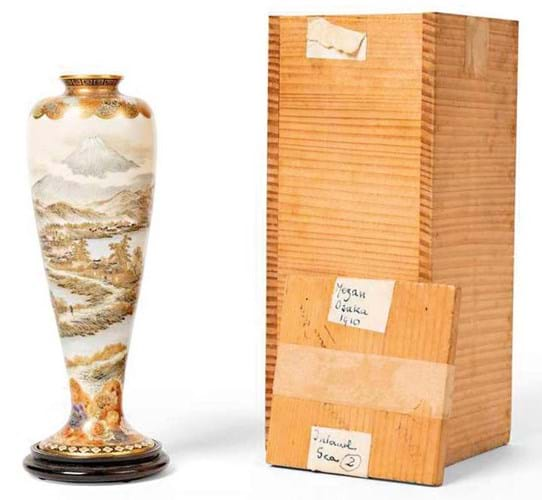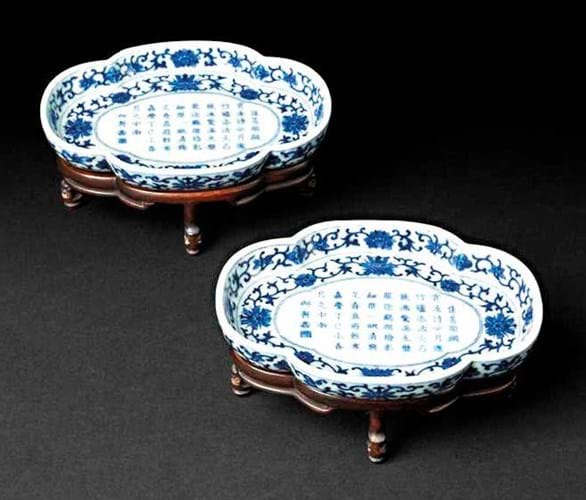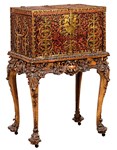The work produced at his workshop in Kyoto was characterised by minute decoration applied using copper plate designs as stencils and much admired at world’s fairs in both Europe and the US.
The American art museum founder Charles Parsons recounted a visit to Meizan’s workshop in his book Notes of a Trip around the World in 1894 and 1895: “He is very celebrated. He had 17 men and boys at work, all decorating. He makes the designs and watches them carefully in executing the work.
“Some are very wonderful workers. All is order, neatness and silence, no words spoken.”
Honeymoon purchase
The slender baluster vase offered by Lyon & Turnbull (26/25/20% buyer’s premium) as part of its auction of Fine Asian and Islamic Works of Art in London on November 3 was a particularly good example.
Standing 7in (18cm) high, it is finely decorated with a continuous Fuji mountain landscape scene between bands of chrysanthemum and peony.
It is housed in the original tomobako (storage box) with a label reading Yabu Meizan, Painter of the finest satsuma porcelain, No. 197, Naka Ni-chome, Dojima, Ocaka, Japan.
The vase came for sale from a London vendor whose great-aunt Etta May Gubbins (1871-1955) had bought it during her honeymoon trip in Yokohama in 1910.
Guided at what was a very attractive £600-800, it raced away to bring £18,000.
Topping the sale was a pair of Qing blue and white ‘poem’ tea trays. Both had Jiaqing (1796-1820) six-character seal marks and were of the period.
Like his father Qianlong, the emperor Jiaqing was something of a poet. The verse on these small dishes praises the pleasure of drinking tea.
It translates as: ‘Finest tribute tea of the first picking. And a bright full moon prompts a line of verse. A lively fire glows in the bamboo stove, The water is boiling in the stone griddle, Small bubbles rise like ears of fish or crab. Of rare Chi’i-ch’iang tea, rolled into tiny balls, One cup is enough to lighten the heart, And dissipate the early winter chill.’
The words, dated to the dingsi year of the Jiaqing reign (corresponding to 1797), appear on a number of similar trays and teapots, some of them in blue and white, others in the famille rose palette.
This pair came from a private Scottish collection, inherited from a family who had worked and travelled extensively in Asia during the 1920s-40s.
Estimated at £6000-8000, they sold at £52,000.
















